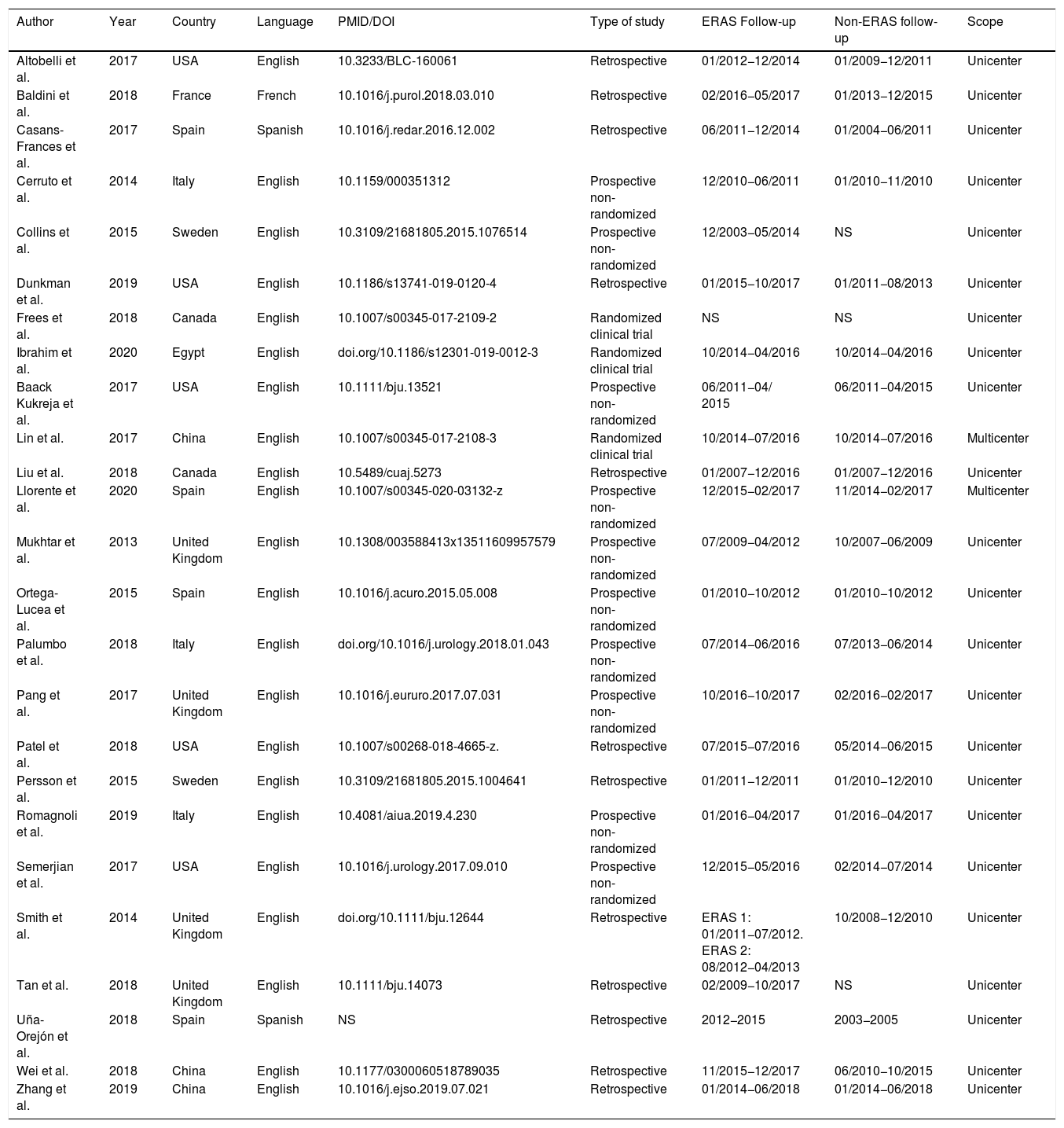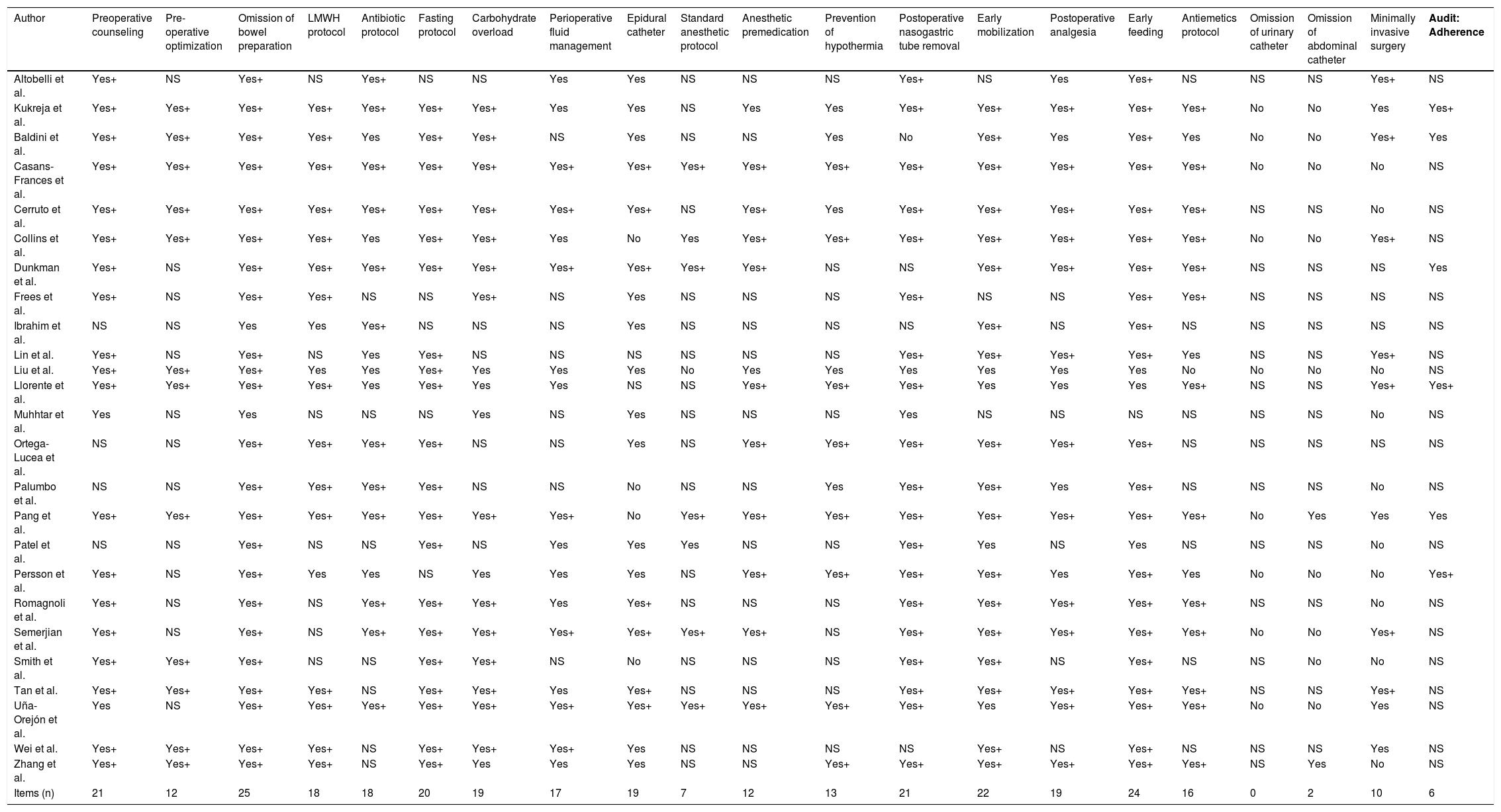The development of ERAS (Enhanced Recovery After Surgery) protocols in patients undergoing major surgery has brought perioperative benefits in several disciplines. Its main application in urology is focused on patients undergoing radical cystectomy.
ObjectiveSystematic review of the available literature on ERAS protocols applied to patients undergoing radical cystectomy in terms of perioperative outcomes as well in the analysis of their implementation.
Evidence acquisitionA bibliographic search was conducted in the electronic databases PubMed, Embase, Cochrane and Scopus, using the terms ≪Cystectomy>>, ≪Enhanced Recovery After Surgery>> and ≪Fast-Track>>. Randomized and non-randomized studies that compared the implementation of an ERAS protocol versus a traditional protocol in patients undergoing radical cystectomy were selected.
Evidence synthesis869 articles were identified; 25 were selected for final analysis: 22 non-randomized and 3 randomized studies. No differences were observed in terms of demographic characteristics between studies. Statistically significant differences were identified in favor of the ERAS protocol: length of hospital stay, major complication rate, time to first ambulation and return of bowel function. In the analysis of protocols, a high variability was detected in the number of items and in the implementation method.
ConclusionsThe multidisciplinary nature and the number of items of the ERAS protocols imply a high heterogeneity in their implementation. Further randomized studies, standardized reporting and analyzing results, as well as a systematic analysis of subsequent adherence are required to increase comparability between groups.
El desarrollo de protocolos ERAS (Enhanced Recovery After Surgery) en pacientes sometidos a cirugía mayor ha aportado beneficios perioperatorios en diversas disciplinas. En urología, su principal aplicación se centra en pacientes sometidos a cistectomía radical.
ObjetivoRevisión sistemática de la literatura disponible de protocolos ERAS aplicados a pacientes intervenidos de cistectomía radical, tanto a nivel de resultados perioperatorios como en el análisis de su implementación.
Adquisición de la evidenciaSe realizó búsqueda bibliográfica en base de datos electrónicas Pubmed, Embase, Cochrane y Scopus, utilizando los términos ≪Cystectomy≫, ≪Enhanced Recovery After Surgery≫ y ≪Fast-Track≫. Se seleccionaron estudios aleatorizados y no aleatorizados que comparasen la implementación de un protocolo ERAS en pacientes sometidos a cistectomía radical frente a un protocolo tradicional.
Síntesis de la evidenciaSe identificaron 869 artículos; 25 fueron seleccionados para el análisis final: 22 estudios no aleatorizados y 3 aleatorizados. No se detectaron diferencias en cuanto a características demográficas entre los distintos estudios. Se identificaron diferencias estadísticamente significativas a favor del protocolo ERAS en tiempo de estancia hospitalaria, tasa de complicaciones mayores, tiempo a primera deambulación y recuperación intestinal. En el análisis de protocolos se detectó una alta variabilidad, tanto en número de ítems como en método de implementación.
ConclusionesEl carácter multidisciplinar y el número de ítems de los protocolos ERAS conlleva una alta heterogeneidad en su implementación. Se requieren más estudios aleatorizados, estandarización a la hora de reportar y analizar resultados, así como un análisis sistemático de la adherencia posterior para aumentar la comparabilidad entre grupos.










